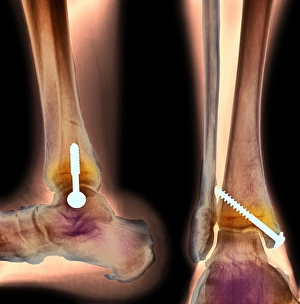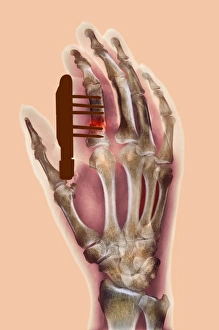Immobilising Collection
"Immobilising: Nature's Sticky Trap and Medical Intervention" In the depths of New Zealand, the remarkable New Zealand Velvet-worm showcases its predatory prowess
All Professionally Made to Order for Quick Shipping
"Immobilising: Nature's Sticky Trap and Medical Intervention" In the depths of New Zealand, the remarkable New Zealand Velvet-worm showcases its predatory prowess. With precision and finesse, this adult velvet-worm captures a cockroach larva prey in its clutches. But what makes this capture even more fascinating is how it immobilizes its victim using a sticky fluid secreted from its body. As the velvet-worm engulfs the cockroach larva, the sticky fluid acts as an adhesive trap, rendering the prey helpless and unable to escape. This unique hunting strategy allows the velvet-worm to secure its meal without any resistance. While nature demonstrates immobilisation in one context, medical science employs similar techniques for healing fractured bones. X-rays reveal pinned thigh fractures where metal rods are strategically placed to stabilize and immobilize shattered bones. These images showcase how modern medicine utilizes immobilization methods to facilitate proper bone alignment and promote effective healing. From leg fractures to ankle injuries, medical professionals employ pins or screws that act as internal supports for damaged bones. These interventions restrict movement at specific joints or areas of injury, allowing tissues time to repair themselves naturally. Just like nature's sticky trap ensures successful predation for the New Zealand Velvet-worm, immobilization techniques in medicine serve as essential tools on our path towards recovery from bone injuries. Whether it be through natural adaptations or human ingenuity, immobilizing proves crucial in both realms - ensuring survival in one case while enabling healing in another. So next time you witness a velvet-worm capturing its prey or come across an X-ray revealing pinned fractures; remember that immobility can have different meanings but serves vital purposes nonetheless – whether it's about securing sustenance or restoring strength within our own bodies.







